The Sea of Grass

Brief Synopsis
Cast & Crew
Elia Kazan
Spencer Tracy
Katharine Hepburn
Robert Walker
Melvyn Douglas
Phyllis Thaxter
Film Details
Technical Specs

Synopsis
St. Louis socialite Lutie Cameron is preparing for her wedding to cattle baron Colonel Jim Brewton, when Jim summons her to his vast ranch, Big Vega, near Salt Fork, New Mexico, claiming he is too busy to make the wedding. Despite cautious advice from her father, Lutie goes to Salt Fork and finds Jim and other cattle ranchers in the midst of a legal battle against a group of homesteaders, led by lawyer Brice Chamberlain. Jim, who owns nearly a million acres of prime land, some of it illegally, wants to maintain the territory for cattle grazing, insisting the land is too harsh for farming. Because of Jim's powerful influence, the ranchers win the court battle, but Brice vows that impending government regulations will soon force changes. Lutie and Jim have a quiet, simple wedding and Jim tries to impart his love of the land to her. Although Lutie quickly wins over the ranch hands and Jim's close friend, Doc Reid, she grows lonely for companionship and befriends Selina Hall and her homesteader husband Sam. Against Jim's advice, Lutie insists the Halls be given a small number of acres on Big Vega. Eventually Lutie gives birth to a daughter, Sarah Beth, but continues to feel lonely, as much of Jim's time is taken in managing the ranch. Lutie hosts several parties at Big Vega and grows friendly with Brice. One night during a harsh winter storm, Jim's men have difficulty driving the cattle back to the ranch and several stray into Sam's small homestead. Outraged at what he considers deliberate destruction, Sam defends his land and is beaten by the ranchers. Selina, several months pregnant, loses her baby when she tries to help her husband. When Lutie rides over later to offer assistance, the Halls reject her and soon after leave Salt Fork. Lutie protests the cruelty of the situation to Jim, who explains that the Halls' departure was inevitable. Miffed at his coldness, Lutie asks permission to go away for a time and Jim agrees. In Denver, despondent and troubled, Lutie runs into Brice, who declares his love for her and asks her to leave Jim. Carried away by Brice's attentions, Lutie spends the night with him, but the next day is filled with remorse, realizing she truly loves Jim. She returns to the ranch and promises Jim she will not interfere with decisions about the land again. Lutie tries to tell her husband about Brice, but only when she gives birth to a son, Brock, and while delirious mentions Brice does Jim learn the truth. Meanwhile, Brice is appointed judge of the Salt Fork territory and grants farming rights to homesteaders on Big Vega. Jim rounds up the ranchers and prepares for a range war, and when Lutie protests in favor of the homesteaders, Jim demands she leave Big Vega, without the children. Doc makes a futile attempt to bring Brice and Jim together to call off the range war, but Jim refuses, capitulating only when the U.S. Cavalry is sent to support the homesteaders. Lutie goes to St. Louis and keeps up with the children through letters from Doc. Two years later, she returns to Salt Fork to see her children and perhaps reconcile with Jim, but realizes her visit is a mistake and, despite Brice's pleas with her to stay, returns east. Meanwhile, the Salt Fork territory undergoes a severe drought, causing most of the homesteads to fail, as Jim had predicted. On his deathbed, Doc chastises Jim for his treatment of Lutie. Guilt ridden, Jim searches for Lutie, he but cannot find her. Over the years Lutie's children grow up, and Brice now writes to her about their upbringing. He describes how Jim dotes upon the insolent but charming Brock and how Sarah Beth's absence at school has only made Brock more wild. Concerned, Lutie starts back to Salt Fork. Meanwhile, Brock becomes involved in a gunfight with a gambler who taunts him about his parentage, and after Brice gets him out on bail, confides to Sarah Beth that he feels he must protect Jim from slander. When the gambler dies, Brock, realizing a public trial would humiliate Jim, jumps bail and flees. Sarah Beth tells Jim the reason for Brock's actions and Jim goes after him, finding him fatally wounded in a cabin surrounded by deputies. Brock dies in Jim's arms just as Lutie arrives in town. Sarah Beth confronts her mother about the past, but realizes Lutie genuinely loves Jim and takes her home to the ranch. There Lutie is at last reconciled with Jim.

Director

Elia Kazan
Cast

Spencer Tracy

Katharine Hepburn

Robert Walker

Melvyn Douglas

Phyllis Thaxter

Edgar Buchanan
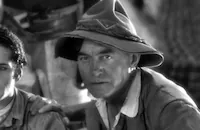
Harry Carey
Ruth Nelson
Wm. "bill" Phillips

Robert Armstrong
James Bell

Robert Barrat
Charles Trowbridge

Russell Hicks
Trevor Bardette
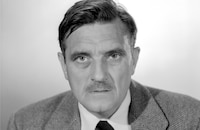
Morris Ankrum

Dan White

Glen Strange

Douglas Fowley
Guy Wilkerson
Buddy Roosevelt
Earl Hodgins
Robert Bice
John Rice
Hank Worden
Larry Lathrop
George Reed
Dorothy Vaughan
Marietta Canty
Vernon Dent
Erville Alderson
Frank Austin
Jack Davis
Irving Smith
Jesse Graves
Bernice Pilot
Myrtle Anderson
Harry Adams
Wyndham Standing
William Holmes
Mickey Martin
Dick Baron

Joseph Crehan

John Hamilton
John Vosper
Bud Fine
Many Treaties
James O'rear
Nora Cecil
Gertrude Chorre
Ann Gowland

Whitner Bissell

Howard Mitchell
Patty Smith
Duncan Richardson
Frank Pharr
Bob Ingersoll

Ray Teal
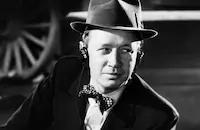
Eddie Acuff
Davison Clark
Joe Brockman
Rocky Wood
Fred Gilman
Jack Montgomery
Lane Chandler
Dick Rush

Lee Phelps
Jack Baxley
George Magrill
Charles Mcavoy
Nolan Leary
Eddie Waller
Forrest Taylor
Gene Stutenroth
Joe Bernard
Ralph Littlefield

Paul Langton
Regina Wallace
June Hedin
Norman Ollestad
Albert Ray
Wheaton Chambers
Skeets Noyes
Jimmie Hawkins
Carol Nugent
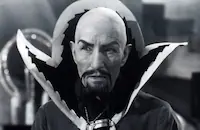
Charles Middleton
Stanley Andrews
William Challee
Frank Darien
Mike Donovan
Bill Van Vleck
Helen Dickson
Ruth Cherrington
Laura Treadwell
Leota Lorraine
Polly Bailey
Vangie Beilby
Sid D'albrook
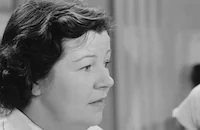
Margaret Bert

Naomi Childers
Rose Langdon
Franz Dorfler
Obed "dad" Pickard
Henry Sylvester
Jasper Palmer
Bill Wolfe
Robert Malcolm
Jack Stoney
Frank Hagney
Crew
Pandro S. Berman
Jack Dawn
Cedric Gibbons
A. Arnold Gillespie
Mildred Griffiths
Paul Groesse
Sydney Guilaroff
Irene
Robert J. Kern
Vincent Lawrence
Warren Newcombe
Edward E. Paramore Jr.
Walter Plunkett
Marguerite Roberts
Richard Rosson
Douglas Shearer
Sid Sidman
Herbert Stothart
Harry Stradling
Valles
Edwin B. Willis

Videos
Movie Clip



Trailer
Hosted Intro
Film Details
Technical Specs

Articles
The Sea of Grass
The movie's plot is best described as a western-set soap opera with Katharine Hepburn as a St. Louis lady who marries New Mexico cattle baron Spencer Tracy, only to find out that he is tyrannically battling the homesteaders who have been settling on his land (which is known as "the sea of grass"). Turned off by her husband's methods, Hepburn has an affair with his enemy, Melvyn Douglas, which produces a son. She and Tracy get back together, and the illegitimate son eventually grows up as a ne'er-do-well (Robert Walker), leading to more tragedy and melodramatic conflicts.
Kazan was so attracted to this story that he specifically asked MGM to let him direct it. He was under contract to Fox at the time, where he had directed his 1945 debut A Tree Grows in Brooklyn, but it was not an exclusive contract and he was free to work for other studios if he wanted. What drew him to The Sea of Grass, he told interviewer Michel Ciment, "was the size of the classic American story" and "a feeling...that when history changes, something wonderful is lost." Kazan envisioned spending months on location a la Robert Flaherty, and making an almost anthropological film using unknown actors whose "faces are like leather." What he got instead was a typical studio movie with huge stars on a soundstage.
Meeting with MGM producer Pandro S. Berman, Kazan discovered that the studio planned to shoot the film almost entirely on the lot with rear-projection images of rolling grass and hills. "It became apparent," Kazan told Ciment, "that none of the picture was going to be shot on location - and it was a picture about grass, country and sky! Now, if I had been knowledgeable, strong, confident, if I had protected my own dignity, I would have quit. But somehow I was trained not to stop, to find the best solution possible." When the final script came in, it too was not quite to the director's liking, but there was little Kazan could do. He had yet to make a serious name for himself in Hollywood, and his clout was limited.
All accounts of The Sea of Grass stress the disharmony on set between Kazan and his two stars. Tracy was suffering from drinking problems and under-acted. Hepburn was primarily interested in controlling Tracy's drinking and overacted. Kazan's Method approach did not work well with Tracy's more instinctive style, and they clashed, with Hepburn arbitrating the confrontations. In her biography Katharine Hepburn, Barbara Leaming wrote, "Kate insulated Spencer from pressure that might drive him to drink. Concerned solely with keeping him sober, she encouraged him basically to walk through the film. Shrewdly, she made it impossible for Kazan to say a word about Tracy's listless performance. Hardly would he finish a take when Kate's voice resounded through the set: 'Wasn't that wonderful? How does he do it? He's so true! He can't do anything false!' Kazan was defeated."
Co-star Melvyn Douglas echoed these observations in his autobiography. Kazan, he recounted, was intimidated by his two stars. He would "work into the night preparing for the next day's work, soaking himself in the script, only to be confronted in the morning by genial Spencer Tracy, who would arrive, throw himself into a chair and casually memorize his lines. Kazan seemed to want bursts of energy and an undertone of malevolence out of the actor; Spence projected a heavy, relaxed authority. He was wonderfully skillful but, finally, did not do what the director requested."
For his part, Kazan found Tracy a far cry from the unknown, leathery face he had desired: "I found that he did not like horses and horses did not like him. He is supposed to play a man who spends most of his time on a horse. He was rather plump, not a western type... not at all, in any way, like the type he was being asked to portray."
As for Hepburn, Douglas wrote that "though playing a lady from St. Louis who was virtually being ground into the plains, she seemed reluctant to put aside her star's glamour. Each time she emerged from the dressing room, she had on a fresh new frock, a costuming scheme to which she steadfastly clung in spite of several confrontations with her director." Kazan told Ciment of this: "All the dresses were very nice, but not at all lived in... The effect of the picture was a lot of pretty illustrations."
Douglas poked some fun at himself, too, recalling that after three years away from movie cameras, he was nervous and "could barely ride a horse." When the movie came out, he received a fan letter that requested he "leave the heavy emoting to Laughton" and return to being "gay, debonair Melvyn."
Early in production Kazan got an amusing lesson in the MGM studio philosophy. He had just shot a scene between Hepburn and Douglas in which Hepburn cries. Kazan was proud of the way it turned out; Louis B. Mayer, however, was not. Kazan went to see the studio chief. "She cries too much," Mayer said. "But that is the scene, Mr. Mayer." "The channel of her tears is wrong." "What do you mean?" pressed Kazan. "The channel of her tears goes too close to the nostril, it looks like it is coming out of her nose like snot." "Jesus, I can't do anything with the channel of her tears!" Kazan exclaimed. "Young man," replied Mayer, "you have one thing to learn. We are in the business of making beautiful pictures of beautiful people and anybody who does not acknowledge that should not be in the business."
Producer: Pandro S. Berman
Director: Elia Kazan
Screenplay: Vincent Lawrence, Marguerite Roberts, Conrad Richter (novel)
Cinematography: Harry Stradling, Sr.
Film Editing: Robert Kern
Art Direction: Cedric Gibbons, Paul Groesse
Music: Herbert Stothart
Cast: Spencer Tracy (Col. James Brewton), Katharine Hepburn (Lutie Cameron Brewton), Robert Walker (Brock Brewton), Melvyn Douglas (Brice Chamberlain), Phyllis Thaxter (Sara Beth Brewton), Edgar Buchanan (Jeff).
BW-123m. Closed captioning.
by Jeremy Arnold

The Sea of Grass
ELIA KAZAN, 1909-2003
Kazan was born Elias Kazanjoglou in Constantinople (now Istanbul, Turkey) on September 7, 1909. In 1913, he immigrated with his parents to New York City, where his father sold rugs for a living. At age 17, Kazan enrolled in Williams College in Williamstown, Massachusetts. After graduation, he went to Yale University's School of Drama, where he studied musical theater and began acting and directing plays.
In 1932, Kazan joined New York's socialist minded Group Theatre as an actor and assistant manager. At the time, the Group Theatre was the epicenter for radical thought and activity in the arts. Kazan befriended such notable theater personalities as Lee Strasberg, Harold Clurman, Stella Adler and Clifford Odets. Kazan even joined the Communist party for two years (1934-36), before resigning because of his disillusionment with its leadership.
After his stint in New York, Kazan went to Hollywood, where he found work as an actor in two Warner Brothers films: City for Conquest (1940) and Blues in the Night (1941). He made his Broadway debut in 1942, directing Thornton Wilder's The Skin of Our Teeth with Tallulah Bankhead; Fredric March and Montgomery Clift. It was a huge hit. After that success, it was back to Hollywood, this time as a director for Darryl F. Zanuck at 20th Century Fox. Kazan's directorial film debut was the poignant A Tree Grows in Brooklyn (1945), based on Betty Smith's bestseller about tenement life. From the beginning, Kazan proved his talent for enticing natural performances from his actors; James Dunn and Peggy Ann Garner both won deserved Oscars for their work in this film.
1947 would prove to be a breakthrough year for Kazan. He notched two huge hits on Broadway: Tennessee Williams' A Streetcar Named Desire and Arthur Miller's All My Sons; co-founded the Actors Studio with Lee Strasburg, a leading proponent of "Method" acting that is still widely practiced today; and two potent treatise on anti-Semitism Boomerang and Gentleman's Agreement, the latter earning Kazan his first Oscar. Kazan's next few films were not among his best, but they were well crafted and interesting: Pinky (1949), the story of a light-skinned black woman who passes for white (hampered by Jeanne Crain in the lead); and Panic in the Streets (1950), a taut thriller about efforts to contain a burgeoning epidemic which was shot entirely on the streets of New Orleans.
It wasn't until he brought Williams' A Streetcar Named Desire to the big screen that Kazan had a major impact on American cinema. Featuring an explosive Marlon Brando in the role of Stanley Kowalski, the films' raw sensuality brought a stark and galvanizing realism to cinema that simply hadn't happened before. A Streetcar Named Desire (1951) not only earned Kazan another Oscar nod for Best Director, but it made a star out of Brando and earned best acting honors for the rest of the cast: Vivien Leigh, Karl Malden and Kim Hunter.
It was around this time that Kazan testified before the House Un-American Activities Committee (HUAC). On April 10, 1952, he informed on former associates from the Group Theater, including Clifford Odets, Lillian Hellman, John Garfield, and Lee and Paula Strasberg. Despite formal protests from many acquaintances from his past, including Odets and Arthur Miller, Kazan remained unapologetic to the end for his actions, and he would remain questioned by social critics for the remainder of his life.
Kazan continued his association with Brando in Viva Zapata! (1952), and then in the powerful On the Waterfront (1954), which took eight Academy Awards, including Best Picture, and a second Best Director Oscar for Kazan. Budd Schulberg's incisive drama about the corruption of longshoremen's unions was the perfect subject matter for Kazan's ever trenchant approach to social consciousness and cinematic naturalism.
Kazan's next effort, based on John Steinbeck's East of Eden (1955) featured James Dean in his first major role. Kazan's continued ability to draw such raw, vulnerable performances out of his actors (as exemplified by Dean) drew critical praise from all quarters, and the film still stands today as one of the most searing looks of a family in conflict.
After East of Eden, Kazan would never quite scale the artistic heights of his previous movies, yet he still came up with some first-rate cinema: the steamy, boldly suggestive Baby Doll (1956), with a thumb sucking Carol Baker as a provocative child bride; an early, superior look at populist demagoguery A Face in the Crowd (1957) with Andy Griffith giving the performance of his career as a corrupt media darling; the moving coming-of-age drama Splendor in the Grass (1961) starring Natalie Wood and Warren Beatty; the evocative America, America (1963), based on the experiences of Kazan's own uncle's immigration experience; and his final film The Last Tycoon (1976) an adaptation of F. Scott Fitzgerald's unfinished final novel, which starred Robert De Niro.
Kazan was in retirement for several years, but he made a notorious return to the limelight when in 1999, the Academy of Motion Picture Arts and Sciences' decided to give Kazan an honorary Oscar® for lifetime achievement. It was a decision met with vocal protests from aging blacklisted artists as well as younger activists. At the time of the presentation, several audience members would not stand up as a form of protest. Still, Kazan attended the ceremonies, thanked friends and family, avoided political discussion, and went home, a most dignified handling of a very controversial moment. Besides his widow, Frances Rudge, Kazan is survived by his sons, Leo, Marco, and Nicholas, a screenwriter who was nominated for an Oscar for Reversal of Fortune (1990); daughters Judy and Katharine; and several grandchildren.
by Michael T. Toole
ELIA KAZAN, 1909-2003
Quotes
Why do women insist on loving men for what they want them to be instead of what they are?- Brice Chamberlain
Trivia
Notes
The following written prologue appears after the onscreen credits: "This story takes place for the most part against the background of the sea of grass-that vast grazing empire which once covered the western part of North America from the great plains to the Rocky mountains, and beyond." An April 1946 New York Times article notes that M-G-M bought the film rights to Conrad Richter's novel in 1937. According to New York Times, the film was first placed on M-G-M's production schedule in 1938, and was later shelved following several "screenplay difficulties." When the project was revived in 1946, the studio designated a starting budget of $2,500,000 and, at one point, considered starring Van Heflin in the role played by Robert Walker. The New York Times article also notes that 40,000 feet of background footage was shot in Nebraska in June 1945, in advance of principal photography.
Most of director Elia Kazan's early films were made at Twentieth Century-Fox, and The Sea of Grass was the only film he made at M-G-M. A June 1946 Hollywood Reporter news item notes that Richard Rosson, who directed the company's second unit, worked on location in Gallup, NM. The film marked actor Melvyn Douglas' first picture since completing his World War II military service. A March 1946 Hollywood Reporter news item listed Beverly Tyler and Tom Drake in the cast, but they did not appear in the final film. Tyler, according to an M-G-M News item, was set to play the part of the daughter of "Lutie Cameron." Various contemporary news items in Hollywood Reporter list actors Ray Weaver, Melvin Martin, Jack Perrin, James Cooley and Beth Bolden in the cast, but their appearance in the released film has not been confirmed. A replica of a New Mexico city of the 1880s was constructed on M-G-M's backlot and used for exterior shots. Additional filming of backgrounds took place at Vasquez Rocks, in Chatsworth, CA.
Contemporary sources reveal that The Sea of Grass was one of the highest grossing films of 1947, earning in excess of $3,100,000 in its initial release. Modern sources note that Kazan criticized M-G-M's decision to film the picture primarily on the studio backlot, because of Tracy's unwillingness to work on location. According to a biography of Katharine Hepburn, all exterior scenes in the film were shot on a sound stage in front of a rear projection screen displaying stock footage of the outdoors. In a modern interview, Kazan denounced the use of rear projection, stating, "I should have quit as soon as I heard that. I'll never be a studio director."

Miscellaneous Notes
Released in United States on Video July 6, 1994
Released in United States Spring April 1947
Shot in 75 days in 1946.
Released in United States on Video July 6, 1994
Released in United States Spring April 1947















